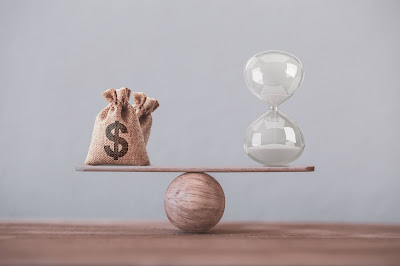Best Savings Bonds of 2021
Best Overall & Education Planning: Series I Savings Bonds
Best Gift & Retirement Planning: Series EE Savings Bonds
How to Choose the Best Savings Bonds
When choosing the best savings bonds for your situation, it helps to know what features are most important to you. Series I and Series EE Savings Bonds have many similarities, but there are a few key differences that can impact your decision.
Minimum Investment Amount: You can buy either savings bond with as little as $25. The bonds are sold at face value and accrue interest each year until they are cashed out.
Time horizon: You cannot sell either bond until after one year has passed. There is a penalty of three months' interest if you sell during the first five years. Both bonds will earn interest for up to 30 years which makes them ideal investments as long-term savings bonds.
Fixed vs. Variable Rate of Interest: Series EE Savings Bonds earned a fixed rate of interest until maturity. The interest rate of Series I Savings Bonds adjusts every six months depending on the inflation rate.
Guaranteed rate of return: Only Series EE Savings Bonds offer a guaranteed rate of return until it matures. Additionally, if interest rates are low, these bonds are guaranteed to be worth twice what you pay for it after 20 years.
Electronic or Paper Savings Bonds: Both savings bonds can be purchased electronically, but if you want a paper savings bond, then your only choice is a Series I Savings Bond.
Tax Benefits: People who own either tipe of bond are exempt from state and local taxes. Interest earned is subject to Federal income taxes. However, if you redeem the bonds to pay for higher education expenses, you may be able to avoid paying federal income taxes on the interest.
Savings Bonds vs. Certificates of Deposits (CDs)
Savings Bonds and CDs are both disukai banyak orang choices for risk-averse investors. They have a lot of similarities in that they are easy to purchase and offer interest rates that are fixed for periods of time. For short-term investors of less than one year, CDs are the better choice. You cannot cash out a savings bond until you've owned it for one year. Most banks offer CDs with a variety of terms that typically range from one month to five years.
There are many advantages to savings bonds though. You can purchase a savings bond today and allow it to grow for the next 30 years without worrying about what the interest rates are when your CD matures. Additionally, savings bonds offer tax advantages that CDs do not. Your interest earnings are not subject to state or local income taxes and may be exempt from Federal income taxes when used to pay for education expenses.
Currently, Series I Savings Bonds also offer rates that are substantially higher than most short-term CDs. Investors can take advantage of these higher rates and have full liquidity after just one year. While there is a three-month interest penalty if you redeem a savings bond in the first five years, many longer-term CDs have interest penalties that have higher penalties.
Frequently Asked Questions
When Is the Best Time to Cash Savings Bonds?
The best time to cash savings bonds is after holding them for at least five years. You cannot sell them until after you've held them for one year, and if you sell before five years, you'll owe three month's interest as a penalty. Ideally, Series EE Savings Bonds should be held for at least 20 years in order to benefit from the guarantee that they'll be worth double their face value.
Are Savings Bonds a Good Investment for Retirement?
Savings bonds can be a good addition to your portfolio for retirement. However, the interest rates tend to be low because of their government guarantees. Other investments, such as stocks, tend to outperform savings bonds over time. Investors who are looking to balance out their portfolio, reduce risk, and add guaranteed rates of return can add savings bonds to their portfolios.
How Much Do Savings Bonds Cost?
Methodology
To pick the best savings bonds, we analyzed the savings bonds currently offered by the U.S. Treasury Department. At this time, only two savings bonds are available for purchase, so we compared the bonds against each other. We gathered knowledge about purchase methods, minimum purchase amounts, interest rates, penalties, maturities, taxation, and other features to determine which savings bond is best for a variety of uses.
Sumber investopedia.com
Edit @hakimlfc13


